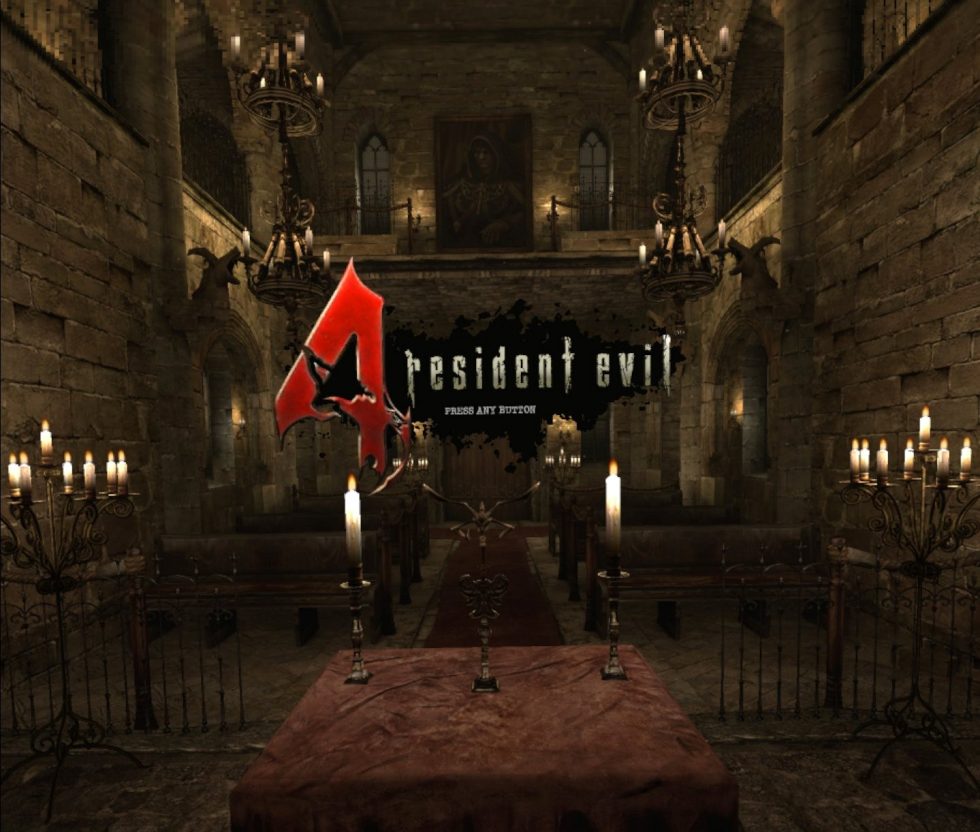What’re you sidequestin’ —
Not every classic 3D game works in VR, but RE4 sure does.
Sam Machkovech
–

Enlarge / This faked perspective of Resident Evil 4‘s monsters coming at you implies that playing the new VR version will make your VR lenses crack. Ars Technica can verify that this is not actually the case—and even better, after applying some manual, “developer mode” toggles, the game is quite good.
Capcom / Facebook
After testing Thursday’s virtual reality launch of Resident Evil 4 (RE4VR), currently an Oculus Quest exclusive, I found myself equally impressed and puzzled. As the roughly 4,000th port of RE4 since the game’s original 2005 launch, this new version manages to establish itself as the action-horror classic’s best version. New and old players should give this one a try—even if it’s missing a few crucial elements.
But as of press time, our recommendation comes with some asterisks, so this is both a review and a technical guide. Facebook may sell the Oculus Quest as a simple “set-and-forget” path to VR, but in the case of RE4VR, I recommend going through some complicated steps to make the game far more playable on its target platform of the Quest 2—and I’ll explain the iffy method to unlock the game’s compatibility with the Quest 1. It’s unfortunate that Facebook, Capcom, and porting studio Armature didn’t straighten all this out for average customers in the first place.
Investigating the Quest 1 restriction

Enlarge / Armature and Capcom’s official screens from the game are cropped to look better on a desktop monitor and are slightly sweetened visually. This one is the most authentic representation of how the game looks on the Quest 2. You can clearly see the original polygonal makeup here.
Capcom / Facebook
For now, this version of Resident Evil 4 only works on Oculus Quest hardware, not on Windows PCs or PlayStation 4’s VR mode. Capcom seems to love locking VR versions of its horror games to specific platforms, as the groundbreaking VR mode in 2017’s Resident Evil 7 remains exclusive to PlayStation VR. (Seriously, Capcom? Five years later, and you still haven’t ported that wonderful game to a more powerful VR system?)
Officially, Facebook limits this week’s port even further, as the company only sells the game for its newer Quest 2 platform. If you own only the original 2019 Oculus Quest, you won’t find RE4 in any of its native store menus. After I began testing the game’s Quest 2 version, I immediately wondered: This restriction can’t be technical, can it? The answer came from the game’s Quest 1-level specs, particularly its 72 fps frame rate cap and lower-resolution textures. Was this a case of the more powerful Quest 2 requiring some visual downgrades to smoothly run a port of a 2005 GameCube game?
Apparently, I wasn’t the only person wondering about this, and sadly, I got my answer from pirates, not legitimate game owners. Yep, the game runs just fine on the Oculus Quest 1.
My hopes for law-abiding Quest 1 owners to get access to the game began with a guide from the Oculus Quest Reddit community promising “RE4 on your Quest 1 without piracy.” The process required a few funky steps. First, by using a Chrome extension, I could log in to my Oculus account to download each of the required files I would need to boot RE4VR on the Quest, all digitally signed with my own account details. Then I enabled “developer mode” on my Quest headset. This allowed me to upload those files via a Windows PC to either a Quest 1 or Quest 2 headset. The community-developed Sidequest app remains the easiest way to do so, though I still had to manually place “APK” and “OBB” files in proper directories.
What’re you (not) buyin’?

Enlarge / Upon the game’s first boot, you’re greeted with this handsome “press a button to start” 3D zone.
Capcom / Facebook
Unfortunately, after following all those steps, my digitally signed version of RE4VR wasn’t digitally signed enough for Quest 1 hardware. The game began to boot just as it does on Quest 2, only to quit itself after displaying a stern warning: “Failed to confirm entitlement, game will now exit.”
After asking around, I got a chance to personally test and verify that this week’s port of RE4VR indeed boots on Quest 1 systems. What’s more, the game runs at an apparently locked 72 fps, albeit with a slightly downgraded image resolution. I couldn’t budge the frame rate in my tests while jumping between various save files, whether in the game’s first busy, villager-filled shootout or later battles like the harrowing showdown against a lake monster. When asked how they got this version running on Quest 1, my source pointed to a Sidequest upload of “certain” files to their Quest 1, then winked.
My source had an easier time getting their copy of the game to run on Quest 1 than I did. My own copy should have been “entitled” enough, but Facebook didn’t agree.
Having seen the game run fluidly on the Quest 1, I then wondered how much peppier the identical-looking game might run on the Quest 2. Its apparent pixel resolution was higher on the Quest 2, but was there more oomph under that heartier hardware’s hood—especially since its screens can technically run as high as 120 Hz?
Quest 2 gets Sidequest love, too

Enlarge / Glance at your left-hand wristwatch to check your current weapon’s ammo while mid-combat.
Capcom / Facebook
I checked RE4VR‘s default menus in search of toggles to frame rates, texture resolutions, or other settings, but there are mostly just control and “comfort” options. The same Reddit community pointed to Sidequest as a simple way to force Quest 2 to try a few more tricks.
This process also requires toggling developer mode on your Oculus account and connecting Quest hardware to a Windows PC. Sidequest streamlines a few “ADB” console commands that you can send to either Quest system, and the Quest 2 can be forced to render games at preferred frame rates and texture resolutions, which can sometimes result in laggy performance, bugs, or outright crashes. In RE4VR‘s case, jumping up from 72 Hz to 90 Hz and slightly higher texture resolutions works without a hitch.
If the game is exhibiting any animation hitches or bugs with these ADB console commands sent to my Quest 2, I certainly can’t perceive them, and I’m particularly sensitive to VR queasiness—so much so, in fact, that RE4VR is an entirely different experience for me with these boosts enabled. Conversely, attempts to run the game at even higher texture resolutions or higher frame rates resulted in more noticeable hitches, suggesting that the Quest 2 has a performance ceiling with this game. (In particular, 120 Hz is a no-go at any setting, based on my uncomfortable tests.) I suggest using Sidequest’s “90 Hz” and “1536 texture size” settings or bumping the texture size even higher to “2048” while leaving the refresh rate at the 72 Hz default to gain fidelity at the cost of frame rate.

